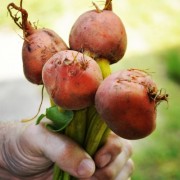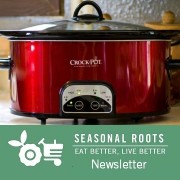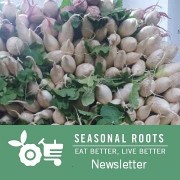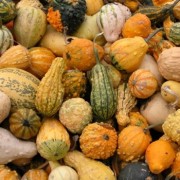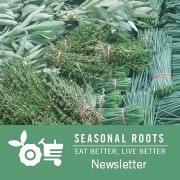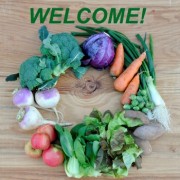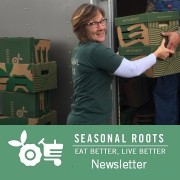Seasonal eating: 5 healthy tips to get ready for fall foods
Mother Nature’s gift gives us what we need when we need it
– By the Veggie Fairy Team
Do you clean out your closets in the spring, enjoy more outdoor activities in the summer, and crave all things warm and cozy in the fall and winter? Your eating habits probably follow the same cycle. Science tells us this is natural, and nature supplies food perfectly designed to give our bodies what they need to stay healthy during each season. Mother Nature’s fall bounty is like a bouquet of good health — a gift for our bodies.
The foods we need change with the seasons
Seasonal eating means eating what grows naturally in each season. Now that it’s fall, you’ve probably noticed all the apples that our friends at Saunders Brothers are harvesting these days. Apples are high in fiber and pectin that help cleanse the intestines and support the digestion of fats.
That’s important, because with the onset of winter our bodies need more fats and protein from meats, fish, nuts, seeds, legumes, root vegetables, and winter squashes. Winter’s cold, dry weather can dry us out and foods that are rich in protein and fat restore moisture to our bodies and make us less susceptible to colds and flu.
In the spring, Mother Nature provides bitter greens like arugula to help clean out our livers. We need to detoxify after processing all those fats and heavier foods that we ate all winter.
Next up: summer. Since we’re outside more in the summer, and more active, we need the extra energy we get from carbohydrates and sugars in warm weather fruits like peaches and strawberries. Produce like cucumbers and watermelon help us hydrate, more, too.
Get ready for fall foods: 5 healthy tips
Now it’s fall, and winter will soon be upon us. So here are 5 healthy steps you can take to make it easy to cook and eat fresh, local fall foods, the way nature intended.
1. In the winter we eat less cold, raw food and more hot, cooked food. Clean your oven so you can start the season without setting off your smoke detectors.
2. Start eating fruits and vegetables that are high in vitamins A and C. They boost your immune system so it’s good and strong for fighting off the germ attacks of cold and flu season. Add greens like kale and collards to smoothies, soups, and pasta dishes. Other A and C rock stars of our fall-season local produce include apples, cabbage, carrots, sweet potatoes, beets, parsnips, hard winter squashes, celery, celeriac, broccoli, cauliflower, and Brussels sprouts. Many of these contain more vitamin C than oranges!
3. You’ll get some of the fat your body needs when you snack on nuts and seeds, which contain healthy fats. Cook with healthy fats like coconut oil, olive oil, flaxseed oil, and walnut oil. Don’t throw away those seeds you scoop out of butternut and acorn squashes! Toss them in olive oil (don’t waste time picking out those strands that come with them, the strands will shrivel in the heat), spread them on a baking sheet loosely covered with foil, then roast them at about 400 degrees until they start to pop. (The foil keeps them from flying around inside your oven.) Stir them and keep an eye on them. Once they’re brown, take them out, sprinkle with salt, and start snacking.
4. Eat whole grains such as brown rice, quinoa, millet, barley, and whole wheat breads. Their dietary fiber aids healthy digestion. Whole grains are also full of iron for healthy blood, antioxidants to keep your cells healthy, and B vitamins to give you energy.
5. Make a homemade, nutritious stock or broth to use in soups, stews, and sauces. Here’s how to make bone broth, which is both immune boosting and good for bone and joint health. And here’s how to make a healthy vegan broth.
ABOUT SEASONAL ROOTS
Since 2011, Seasonal Roots’ online farmers market has connected Virginia families with local family farmers who use sustainable, humane practices. Our veggie fairies – mostly moms who believe in living better through scrumptious, healthy eating, being kind to animals, protecting the environment, and spreading joy – home-deliver freshly harvested produce, pastured eggs, grassfed dairy and meat, plus artisan fare. We empower our members to eat better and live better with more nutritious, flavorful food that’s good for us and good for the planet. More info at seasonalroots.com.
